Philip Arnold (1829–1878) was a confidence trickster from Elizabethtown, Kentucky, and the brains behind the legendary diamond hoax of 1872, which fooled people into investing in a phony diamond mining operation. He managed to walk away from the hoax with more than half a million dollars.
The Adams Street Historic District in Franklin, Tennessee consists of properties at 1112-1400 Adams, 1251-1327 Adams St., and 304-308 Stewart St. It is a 14-acre (5.7 ha) historic district was listed on the National Register of Historic Places in 2000 and is one of seven local historic districts in the city of Franklin.
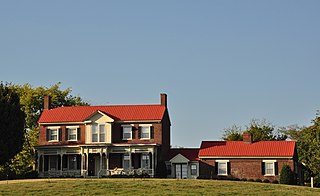
The Nathaniel Smithson House is a property in Peytonsville, Tennessee, which was listed on the National Register of Historic Places in 1988.
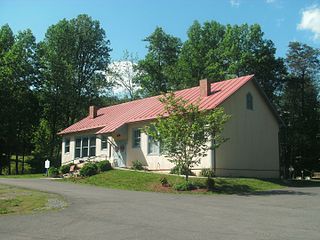
Scrabble School is a historic Rosenwald school for African-American children located near Castleton, Rappahannock County, Virginia. It was built in 1921–1922, and is a one-story, wood-frame building clad in rough-cast stucco siding. The building sits on a poured concrete foundation. It features overhanging eaves, a wood cornice, exposed rafter tails, and decorative corner brackets in the American Craftsman style. Also on the property are the contributing concrete block coal house/shed and septic tanks / privy sites. The school was permanently closed in 1968.

The Benjamin Helm House is a two-story brick house in Elizabethtown, Kentucky, that was built in 1816 and added to the National Register of Historic Places in 1988. It is significant as the home of Benjamin Helm, an early settler of Elizabethtown. He made the first survey of the town and later became a wealthy local businessman, dying in 1858. He was the uncle of Governor John L. Helm, and great uncle of Confederate general Benjamin Hardin Helm.
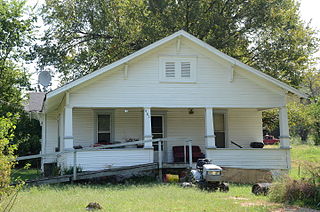
The J.M. McCall House is a historic house on Spring Street in Marshall, Arkansas. It is a single-story wood-frame structure, with a gable roof, walls finished in novelty siding, and a stuccoed foundation. The roof eaves have exposed rafter ends in the Craftsman style, and the front porch is recessed under the roof, supported by four tapered square posts. Built about 1910, it is a well-preserved local example of Craftsman architecture.

J. Herbert Moore House is a historic home located at Poplar Bluff, Butler County, Missouri. It was built in 1938, and is a two-story, irregular plan, International Style dwelling of wood and concrete construction with a stuccoed exterior. It has an attached garage and carport. It features original multi-light steel casement windows and original structural glass blocks.

Alfred W. Greer House is a historic home located at Poplar Bluff, Butler County, Missouri. It was built in 1915, and is a 2+1⁄2-story, rectangular plan, American Craftsman style brick dwelling with a 2+1⁄2-story side wing. It has a gable roof with wide eaves and exposed rafters and features large brick porch piers on the main facade.
Blue Ball Church, in Hardin County, Kentucky near Howe Valley, was built in 1849. It was listed on the National Register of Historic Places in 1988. It is also known as Blueball Baptist Church or Blue Ball Baptist Church.
The Abraham Ditto House, at 204 Elm St. in West Point, Kentucky, is a historic house built in 1823. It was listed on the National Register of Historic Places in 1988.

The William Bush House, at 1927 Tunnel Hill Rd. in Elizabethtown, Kentucky, is a historic house built in 1817. It was listed on the National Register of Historic Places in 1988.
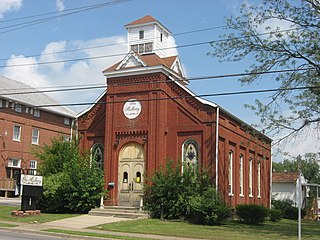
The Embry Chapel Church, at 117 Mulberry St. in Elizabethtown, Kentucky, was built in 1868 to serve the Second Presbyterian Church, and was sold in 1891 to an African Methodist Episcopal congregation which had formed in 1865. It was listed on the National Register of Historic Places in 1988.
Dr. Clyde Carroll House, on Dead Man's Cave Rd. in White Mills, Kentucky is a historic house built in 1903. It was listed on the National Register of Historic Places in 1988.
The Ditto-Prewitt House, at 306 Elm St. in West Point, Kentucky, is a historic house built in 1826. It was listed on the National Register of Historic Places in 1988.
The William Tichenor House, near Upton, Kentucky, is a historic house built around 1820. It was listed on the National Register of Historic Places in 1988.
The Philip Arnold House, at 422 E. Poplar St. in Elizabethtown, Kentucky, is an Italianate-style house built in 1869. It was listed on the National Register of Historic Places in 1988. The house was home of Philip Arnold, a confidence man at the center of the Diamond hoax of 1872.
The Glendale Historic District in Glendale, Kentucky is a 21.5 acres (8.7 ha) historic district which was listed on the National Register of Historic Places in 1988.
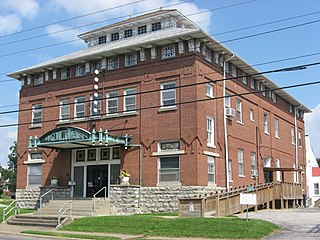
Morrison Lodge, at 125 N. Mulberry St. in Elizabethtown, Kentucky, is a historic Arts and Crafts-style Masonic building. It was listed on the National Register of Historic Places in 1988.
The West Point Historic District in West Point, Kentucky is a 55 acres (22 ha) historic district which was listed on the National Register of Historic Places in 1996.

The Elizabethtown Courthouse Square and Commercial District, in Elizabethtown, Kentucky, is a 10 acres (4.0 ha) historic district which was listed on the National Register of Historic Places in 1980. The listing included 38 contributing buildings.












